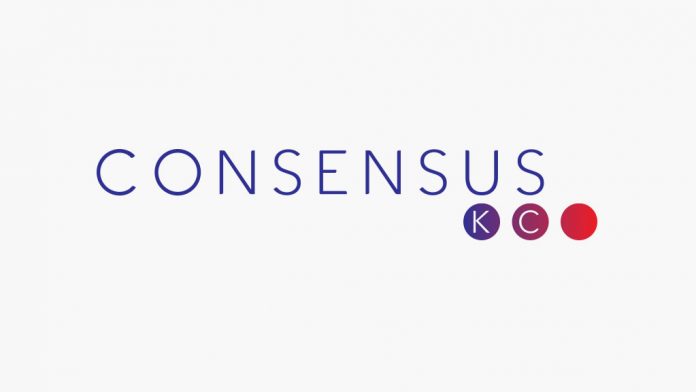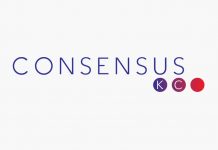2013: The Year of the Small Group
In Infinite Jest, author David Foster Wallace imagined a world in which years have sponsors, like the Year of the Trial-Size Dove Bar or the Year of Dairy Products from America’s Heartland. In the spirit of that groundbreaking (and almost infinite) American novel, Consensus hereby declares 2013 the Year of the Small Group.
Every Consensus e-newsletter in 2013 will feature an article intended to help you involve people in small groups. (This article appeared in our February e-newsletter.) Why? While public hearings increase conflict and rarely produce solutions, they are easy and inexpensive. But…what if a much better method was almost as easy? Small groups are that method, and we are going to help you make them work for you, starting…now.
This article will explain some of the benefits of small group discussions, so you have the context. Future articles will cover the space and people you need, how to structure a public meeting that includes a small-group discussion, questions that work well in small groups, and tips for small-group facilitators.
The Year of the Small Group also includes free consulting to help you use small groups effectively. If you want to design a small-group discussion, we will give you two hours of free advice. We believe that better process produces a better community, and it’s worth our time to help you succeed.
Why small groups make the world a better place
Let’s say that you have called a public meeting and 50 people show up. Here is the difference between what those 50 folks would experience at a typical public hearing versus a small-group discussion:
Public hearing: Chairs are set up in rows facing a stage, where public officials sit in a row facing the audience. A microphone is set up in the aisle facing the officials. Members of the audience who want to speak stand in a line behind the microphone. Each person has a set amount of time, usually two or three minutes, to make a statement. The statement is directed at the public officials, and the speaker’s back is to his or her fellow citizens.
Small-group discussion. You start the meeting in the large group for sharing information and instructions. Then you break into groups of 4-10 persons. Depending, you may have a facilitator at each table. Your group has a set of questions to answer and has been asked to prepare a brief report for the large group. For the next 30 minutes or so, you work in your small group to complete the task. Then everyone comes back together in the large group and you hear the answers that each small group developed.
As you can see, the two formats are quite different. When Consensus held 20 focus groups with hundreds of citizens, we asked people to describe their experiences at public meetings. Most had attended a public hearing and most disliked the model. Here were the complaints we heard most often:
• The decision has already been made and the hearing is just a formality.
• It’s not worth my evening when I only have two minutes to speak.
• I hate speaking at a microphone.
• I fear being the target of a personal attack.
• When officials are up on the stage, it sends the message they are better than or afraid of us.
• I want to share ideas with other participants.
When people talked about public meetings that worked well, they shared two major characteristics. First, they were held early enough in the process that people felt that their involvement made a difference. Secondly, people worked in small groups to accomplish a meaningful task.
Here are some of the advantages of using the small-group method instead of the public hearing model:
• Participants do the hard work of finding solutions instead of the easy work of tearing down someone else’s plan.
• Participants look for common ground rather than just what’s best for them.
• People behave better because, focus group participants told us, it’s hard to be nasty to someone sitting right across the table from you.
• For a variety of reasons, public officials are much less likely to get yelled at and more likely to be treated as partners.
• A person who seeks to derail the process will have a very hard time messing with more than one small group.
• Officials end up with useful information. Typically, groups have to get past wishful thinking and denial to find agreement.
An important bit of context: Adaptive challenges versus technical problems
The most common leadership mistake is treating adaptive challenges as if they were technical problems. In our experience, officials who understand the distinction really understand the limitations of the public hearing model and the need for better methods. (Many of these officials have taken part in leadership programs offered by the Kansas Leadership Center – www.kansasleadershipcenter.org – which includes this in its training.)
In a nutshell:
• A technical problem is one that somebody already knows how to solve. You need to find the people with the expertise and then work quickly to implement the solution.
• An adaptive challenge can’t be solved with our current level of knowledge or our habitual ways of doing things. To close the gap between where you are and where you want to be requires that you do something new. People need to learn and try new things to understand the situation and craft solutions. Adaptive challenges surface different values and points of view, and progress involves making choices. Problem-solving responsibility shifts away from experts to stakeholders, as they will need to be involved in finding and implementing solutions.
Here is an example of the difference, from a project Consensus worked on with the Mid-America Regional Council. We helped four health departments engage the public around preparing for pandemic influenza. If pandemic influenza broke out, one of the first tasks would be to develop a vaccine that could protect against the new strain. That’s a technical problem. Scientists already know how to make a vaccine, and just need to get into the lab to get it done. But…it would take about six months before there would be enough vaccine for everyone. The spread of pandemic influenza could be slowed if a significant number of people could work from home. Making that possible is an adaptive challenge. It would involve businesses, unions, utilities, neighborhood leaders and other stakeholders in finding new ways to organize work. No solution exists, and the people with the problem would need to help find and implement the solution.
The public hearing model was developed decades ago, when everything looked like a technical problem. We know better today. When values are in conflict and you can’t solve a problem for one person without making it worse for someone else, get people talking in small groups. The public can be trusted to do harder work, better, than you would have thought possible.



